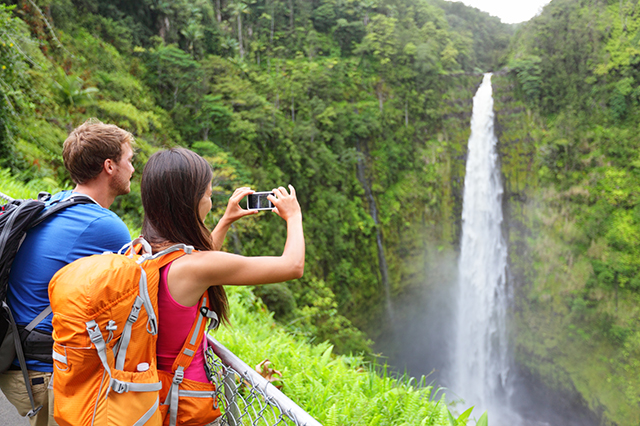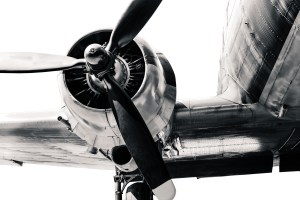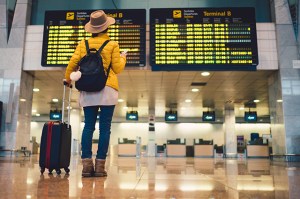In the age of Instagram, quality photos are king. After all, if you went on a vacation and didn’t share at least one amazing photo of it on social media, did it ever really happen?
But seriously, if you’re like me, travel photography is about more than just building a great-looking social gallery, and it’s more personal than collecting likes. For most of us, vacations are too infrequent, too short and sometimes, once-in-a-lifetime. And since you can’t always rely on your brain, photos are the best and most vivid way to capture and relive your vacation memories over and over again.
Follow these travel photography tips and learn how you can grab some frame-worthy shots on your next trip.

Travel photography tips 101
Keep it light. Lenses, tripods and other travel photography equipment will add extra pounds and burdens that you don’t need (airport security, personal security, neck and back pain). Although they are on the expensive side, new mirrorless cameras provide professional quality photos without the weight of a traditional DSLR. And while that is something for more serious photographers to consider, the average shutterbug can rely on the latest smartphone technology. For international travel, beachy locales and theme parks, your phone may be the safest option. If you do end up bringing your trusty DSLR, keep the weight as low as possible with just one extra lens.
Practice makes for practically professional photos. If you have a new camera, be sure to familiarize yourself with its various settings. Take a bunch of practice shots to prepare for different lighting scenarios and unexpected moments. Same goes for phone cameras; learn all about the available bells and whistles on your model and play with them. Technology is becoming so advanced that phone cameras are made to auto adjust based on the environment, so you don’t have to do much.
Natural light is your friend. The best times of day to get the most interesting photos are early in the morning when the sun first comes out and just before it sets at night.
Think like a photographer. Capture landmarks and landscapes, but go beyond a simple point and shoot approach. Look for interesting shadows, movements, reflections and patterns or try a different perspective, like British photographer Oliver Curtis, whose “Volte-face” collection turned the camera around to focus on what it looked like behind major tourist landmarks such as the Taj Mahal and the pyramids of Giza. These simple touches can elevate an average photo to art. Of course, when it comes to travel photography, it’s hard to resist a good tourist cliché, so go ahead and hold up the Leaning Tower of Pisa.
Good composition. This plays off the last travel photography tip. You might be tempted to put the focus or the subject of your image directly in the middle of your photo, but don’t be afraid to try something different for a more attention-grabbing image. Nikon offers a few good composition tips, including the Rule of Thirds, a guideline for directing the eye to the most important part of a photo in the most interesting way.
Get candid. One of the best ways to capture the culture and overall spirit of a place is to take candid street photos of ordinary people just living and going about their day. If you would like to get more up close and personal for a portrait or a posed photo, make sure to ask the person for their permission first. The worst that could happen is that they say no (or they ask you to pay for it).
Don’t hog the shot. In high traffic tourist areas you can bet that there will be selfies galore. Everyone wants the same picture at the same time, so be polite and mindful of others. Whether you’re taking a picture in front of the Parthenon or of Mickey Mouse in the parade at Disney, take your photos then step back and allow others to do the same.
It’s OK to edit (a little bit). Editing or enhancing your photos is not faking it – as long as you don’t go overboard and make it look that way. Use a light hand while adjusting the brightness and contrast to bring out details and enhance the photo. And I think we all can appreciate the blemish-erasing magic of the spot healing brush.
Don’t rush. The greatest photos are rarely the result of a quick click and dash. It can be hard when you are traveling and you want to keep moving on to the next thing, but if you have some time, it’s worth it to be patient and wait for the right moment and the right light.
Back up your photos. This might be one of the most important travel photography tips on the list. You would be heartbroken if all of the photos from your trip were lost. Cloud storage is a safe bet, but you can also invest in an external hard drive and be vigilant about backing up your photos for extra assurance. If you want to be even more cautious, you can upload and back up your photos every day when you get back to your hotel in case anything happens to your camera while on vacation. Prints may seem like a thing of the past for some, but printing your best photos and putting them in an album is a great way to ensure that you can hang on to your memories for as long as possible. Services like Snapfish make it quick and easy, and they are always offering a deal.
Live in the moment. Let the time you tossed a coin behind your back into the Trevi Fountain be the memory; not the time you spent taking out tourists to get five thousand versions of every angle of the Trevi Fountain. In other words, don’t get too caught up getting the perfect shot. A picture may be worth a thousand words, but moments are irreplaceable and worth so much more.
Have any travel photography tips that you would like to share? What’s your favorite vacation photo? Tell us your story in the comments below.
One Thought on “Travel Photography Tips for the Average Shutterbug”
Leave A Comment
Comments are subject to moderation and may or may not be published at the editor’s discretion. Only comments that are relevant to the article and add value to the Your AAA community will be considered. Comments may be edited for clarity and length.













Be mindful of boundaries, fences, signs such as ‘Private Land’, ‘Do not enter’, ‘Do not go past this point’, etc. These signs protect places and even you. Stay behind the ropes, fence, etc.